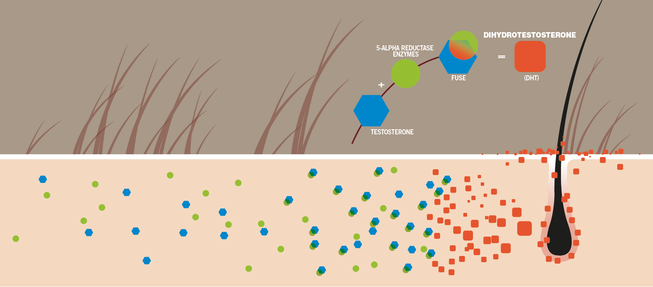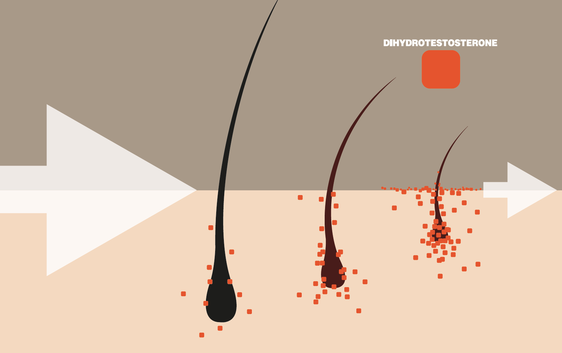At last, thinning hair has an advanced botanical alternative with proven effectiveness
Cliniscalp fuses the power of proven botanicals with advanced hair care science to create stylist-backed solutions for thinning hair.
Whether hair is chemically treated or natural, in early or advanced stages of thinning, Cliniscalps 3-step daily regimen help achieve an optimal scalp environment to maximise your hairs natural growth potential.
Whether hair is chemically treated or natural, in early or advanced stages of thinning, Cliniscalps 3-step daily regimen help achieve an optimal scalp environment to maximise your hairs natural growth potential.
Clinically proven to leave hair
fuller-, healthier-, thicker-looking*
*based on a US indepentant clinical study of (28 participants)
|
Download the full fact sheets here:
|
| ||||||
|
STEP 1 & 2
CLEANSE & NOURISH
|
|
STEP 3
TREAT & RESCUE
|
UNDERSTANDING HAIR LOSS
The most common form of male and female hair loss, androgenic alopecia, is genetic and linked to hormones called androgens--the main reason for hair loss.
|
Androgenic alopecia is a normal ageing process (occurring in both men and women) that transforms terminal hair into vellus (very fine) hair; in some cases this process happens very early in life.
The "culprit" hormone, called dihydrotestosterone (DHT) is converted by our bodies from testosterone. It's considered to be mostly directly involved hormone in androgenic alopecia. This "conversion" happens when testosterone is combined with a certain enzyme, 5-alpha reductase. |
The result: An excess of DHT increase the process of thinning. Men have more androgens and 5-alpha reductase enzymes than women, so female androgenic alopecia is usually milder.
The most common misconception about hair loss is that there is a decrease in overall number of hairs on the head. In most cases hair loss starts as progressive miniaturisation of hair follicles, resulting in the transition of thicker hairs to vellus hairs. With shorter growth cycles, hairs grow thin and do not get a chance to develop into thicker hairs they once did.
The most common misconception about hair loss is that there is a decrease in overall number of hairs on the head. In most cases hair loss starts as progressive miniaturisation of hair follicles, resulting in the transition of thicker hairs to vellus hairs. With shorter growth cycles, hairs grow thin and do not get a chance to develop into thicker hairs they once did.
DHT inhibits hair growth by:
• penetrating the hair follicle • binding to hormone receptors • building up on the scalp
These effects are cumulative over time
• penetrating the hair follicle • binding to hormone receptors • building up on the scalp
These effects are cumulative over time
8 MAJOR CAUSES OF HAIR LOSS
As the number of men and women experiencing hair loss continues to rise, more and more hair care research is being dedicated to discovering the factors that can contribute to hair loss. To date, scientists have identified eight major causes:

Genetics: A genetic predisposition of hormonal balances and imbalances, along with the conversion of testosterone into dihydrotestosterone (DHT), are the lead causes of hair loss. Contrary to popular belief, genetic predisposition to hair loss can be inherited from either your mother's or your father's side of the family.

Ageing: The ageing process can play a role in follicle deterioration and hair loss.

Stress + Trauma: Stress produces an increased level of testosterone, which converts to DHT and interrupts the hair growth cycle. Stress and trauma can also constrict the blood supply to the capillaries, causing a lack of oxygen and nutrient uptake, as well as poor vitamin and nutrient assimilation of the hair follicles.

Nutricean + Diet: Poor nutrition, rapid weight loss, a high consumption of animal fats, and deficiencies in biotin, iron, protein and zinc can reduce the vital amino acid and vitamin assimilation needed for hair growth.

Health: Thyroid diseases, as well as the side effects of the medications used to treat these diseases, are the most common health related causes of hair loss.

Life Changes: Hormonal changes during pregnancy can lead to temporary hair loss that can last from 6 months to 12 months after childbirth. Menopausal women can also experience hair loss due to hormonal shifts.

Medications: Birth control, steroids and chemotherapy, in addition to many blood pressure, diabetic, heart disease and acne medications, can cause temporary or permanent hair loss. Consult with your doctor to learn more about the side effects of the medications you are prescribed.

Environmental: Environmental pollutants in the air and water, as well as exposure to chlorine, metals and minerals, can lead to hormonal imbalances that can contribute to hair loss. UV exposure and free radicals can also prematurely age the scalp cells and damage the hair shaft.
THE CLINISCALP METHOD
Cliniscalp's 3-step daily regimen wages a comprehensive attack against hair loss by:
- Cleansing the scalp of sebum & DHT with botanicals 5-alpha reductase enzyme inhibitors.
- Helps neutralise environmental pollutants that can weaken or damage the scalp and hair follicles.
- Providing essential nutrients to the scalp and hair follicles
- Increasing the microcirculation of the scalp to prepare it for targeted treatment.
- Strengthening and maintaining existing hair.
CLINICALLY SYNERGISED FORMULAS
Cliniscalp takes an advanced approach to botanical hair care with its clinically synergised formulas.
Each cliniscalp formula contains a unique combination of carefully blended botanicals, essential vitamins and modern technology, which together create a powerful synergy that helps provide maximum results
Each cliniscalp formula contains a unique combination of carefully blended botanicals, essential vitamins and modern technology, which together create a powerful synergy that helps provide maximum results
Syn•er•gy (sin'er-je)
n. The interaction of two or more agents or forces so that their combined effect is greater then the sum of their individual effects




